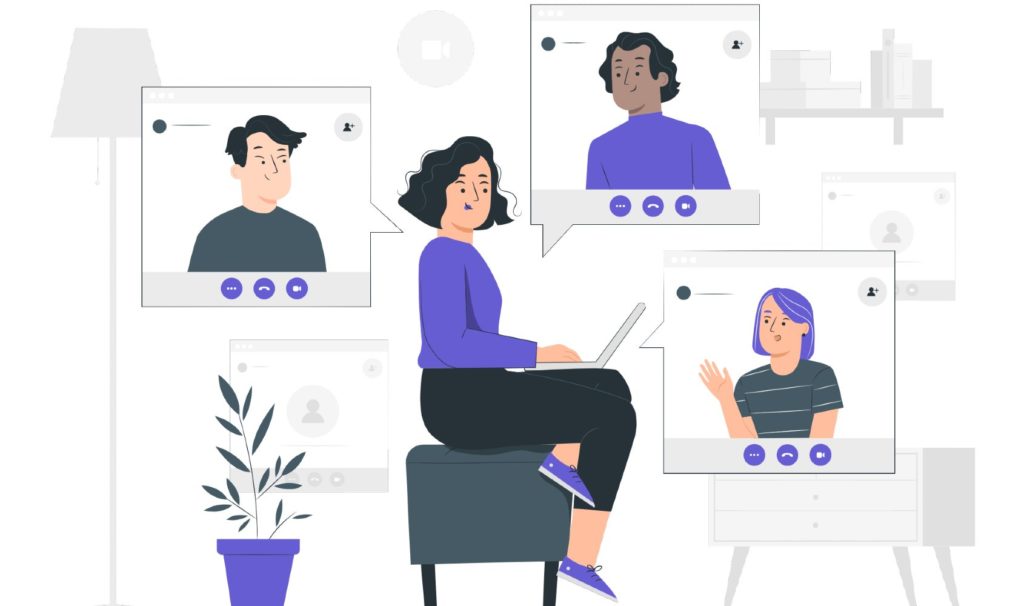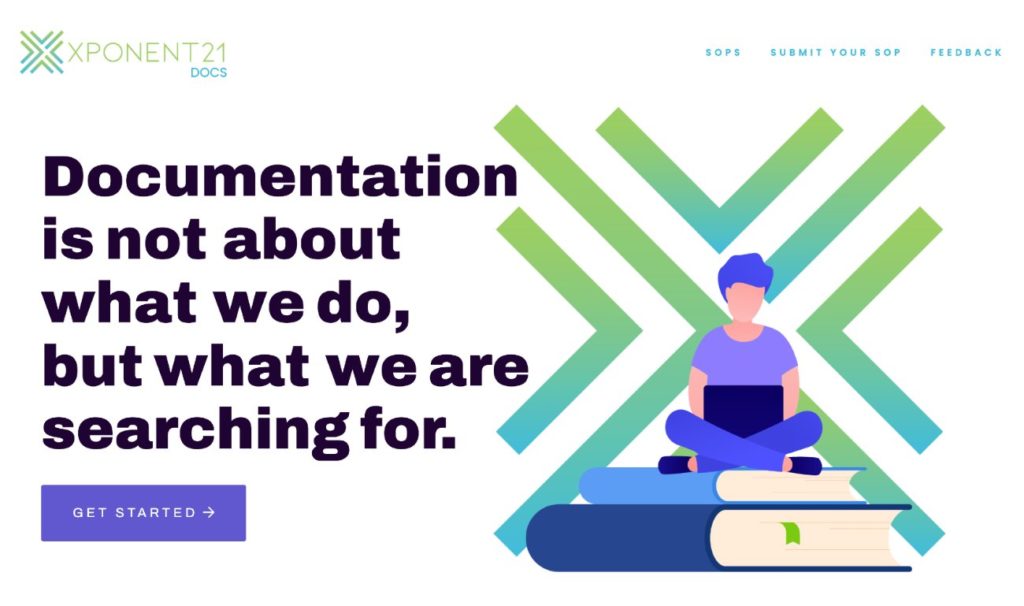Categories
Tags
Key Takeaways:
- When designing the employee experience, creating a psychologically safe environment that encourages team members to share concerns, questions, and ideas is foundational to success.
- It is more important than ever before to effectively gauge and respond to employee burnout.
- Implement conventions and procedures that clarify and streamline internal communications and reduce exposure to non-essential information.
- Set guidelines to improve productivity of meetings so you can reduce the overall time spent in them.
Contents
- Approaching the Workplace Experience Like an Experience Designer
- How Xponent21 is Redesigning the Employee Experience
- Conducted a listening tour to understand the workplace experience of each team member.
- Surveyed the team to capture what makes each team member special and drafted new bios to convey their magic.
- Started to define key performance indicators for the workplace experience at Xponent21.
- Made improvements to our work operating system in Asana.
- Inventoried the tools we use to make work easier.
- Revised our new team member onboarding process and existing team member evaluation and development process.
- Started to thoroughly document our operating procedures in an easy-to-use web app for team members. (Including submission forms for automated SOP publishing.)
- Adopted new conventions for meetings so we’re more productive when we’re together.
- Where Are We Headed?
- Related Articles
Approaching the Workplace Experience Like an Experience Designer
At Xponent21, there is a question that is baked into every experience that we design: What happens next?
You might think of experience design as analogous to building a physical structure. The design needs to be architecturally sound and complete, with pathways to get someone safely from point A to point B. Similarly, when designing a customer journey, we engineer each touchpoint to ensure clarity, ease, non-redundancy, on-brand messaging, and an overall delightful experience.
With our recent focus on workplace experience, we are striving to create the same delightful experience for our employees. From work location and hours to tech stack and software tools, from employee benefits to community engagement programs, every component of the workplace experience presents myriad opportunities for incremental, or in some cases major, improvements.
How Xponent21 is Redesigning the Employee Experience
Since formally introducing the Chief Work Officer role in October, our team has already introduced changes to the organization. Here’s what we’ve tackled so far:

Conducted a listening tour to understand the workplace experience of each team member.
Because leaders are not “in the trenches”, it’s critical to seek out feedback from your team to orient you to friction points in your workflows. One of the first things I did in my new role was to conduct a WX Listening Tour.
I met (virtually) with every member of the team individually to hear about their work experience. Primarily, I wanted to uncover roadblocks, frustrations, and perceived limitations that arise in the course of their work. Secondarily, I used these interviews as opportunities to connect more deeply with each of my colleagues. I learned more about which aspects of their day-to-day job spark the most joy and inspiration for them.
If we can remove roadblocks and provide more opportunities to work on the things that inspire our team, we can improve the employee experience, tap into more creativity, and drive greater productivity.
Tip: Create psychological safety for your team. If open dialogue is not already part of your company culture, you’ll need to think about how you can create an environment that welcomes interpersonal risk taking. How can you encourage team members to speak up about any concerns, questions, ideas or problems?
Surveyed the team to capture what makes each team member special and drafted new bios to convey their magic.
As a small company, our CEO, Will Melton, is often the first representative of Xponent21 whom new clients meet. He is a visionary leader with “woo” factor and a highly creative digital strategist. But he’s not the only player on the team. In fact, he’s not even the MVP! We have a full roster of all-stars. That’s why we wanted to elevate the profiles, background, and skills of all of our team members.
To create a digital bio that conveys the personality, talents, and contributions of a real person is nearly impossible. But, we took a unique approach in our effort to do so. We created a survey that asked the team to provide a few words about each of their colleagues. Next, we then compiled these quotes to display on the bio pages. This allows clients as well as new and prospective team members to get a behind-the-scenes look at what each person contributes to the team, their responsibilities, and a glimpse into who they really are.
Get to know us by visiting our Team page and clicking on a team member to read their full bio.
Started to define key performance indicators for the workplace experience at Xponent21.
If you’re reading this article, you’re probably intimately familiar with key performance indicators (KPIs). These are a set of quantifiable metrics that you can use to gauge long-term performance in a given area.
Just as it’s critical to define KPIs for finance, sales, and operations, it’s also important to identify and track KPIs for the employee experience. What these are will depend on the specifics of your organization, the work you perform, and how you manage it. You might consider metrics that can represent productivity, work quality, engagement, professional development, and burnout.

Tip: In light of the ongoing pandemic and the great resignation, gauging burnout is more important than ever before. Access to excessive information and notifications is a major contributor to burnout. You might consider how your organization uses email, Slack, Zoom, physical meetings, and other forms of communication. Can it be streamlined, reduced or eliminated?
Made improvements to our work operating system in Asana.
If America runs on Dunkin’, Xponent21 runs on Asana. Asana is a work management application that we’ve been using to run our operations since 2017. Since that time, our organizational structure has changed. We’ve introduced new teams, new positions, new products, new services and new clients. Similarly, Asana itself has evolved, introducing new functionality and features to incrementally improve their platform.
To keep our operations running smoothly, we continually assess, maintain, and improve the way we use Asana. In 2020, we introduced agile methodology. This allows us to process more work more efficiently across distributed teams with the same quality and attention to detail. That meant redesigning our workflows in Asana based on a SCRUM framework. We also restructured our organizational architecture in Asana, making it easier for team members to find and share information and organize work. Additionally, we introduced new conventions for the frequency and mode of providing status updates to project collaborators to ensure clarity and streamline internal communications.
Inventoried the tools we use to make work easier.
As a digital services company, it probably won’t surprise you that we use a LOT of different softwares and digital tools. To ensure that the team is aware of all of the tools available to them, we created a comprehensive inventory. For each tool, we’ve indicated what it’s best used for, which of our teams use it and when, where to find it, and who the resident expert is in case anyone has any questions about the tool. By organizing this information in one place, we can reduce non-essential communications within the team. Plus, we can improve the experience of employees by making it easier to find the things they need.
Revised our new team member onboarding process and existing team member evaluation and development process.
They say that first impressions are everything, and the same is true for an employee. The onboarding experience for new team members is foundational to their workplace experience. Admittedly, ours left a lot of room for improvement. We embarked on a complete overhaul of our employee onboarding process that will continue to be a focus in 2022.
The biggest change we are implementing is a virtual online learning program. It walks new employees through a self-guided introduction to our company, an overview of our operating system in Asana, and more targeted training coursework based on their specific role. By building an online course, we not only ensure that each team member has the same foundational knowledge of our company and operations, but we also reduce the burden on existing employees to help train and answer questions from new team members.

Started to thoroughly document our operating procedures in an easy-to-use web app for team members. (Including submission forms for automated SOP publishing.)
Along the same lines of reducing non-essential communications that interrupt workflow, we have also begun rolling out an initiative to improve our documentation. Our Director of Operations, Dennis Harding, is leading this effort. Beginning with our development team, he is working with each team to identify, define, review, and publish standard operating procedures (SOPs) to systematize the work.
Our development team tapped into their creativity to build a dedicated web app for our team members to use to search, submit, and request SOPs. This effort is still underway, but we are already seeing the positive impact of having clearly defined, readily available SOPs for our team to reference in approaching their work.
Adopted new conventions for meetings so we’re more productive when we’re together.
To cut down on the total time that our team is in meetings, we’ve introduced a handful of new conventions. We’ve set the expectation of running efficient meetings — inviting only the essential people at a reasonable duration. You’d be amazed at how many hour-long meetings can be replaced with a 30- or even 15-minute meeting.
We set a new convention that meetings must have an agenda, which can be shared with participants ahead of time (ideal for internal meetings) or presented briefly at the start of the meeting. For standing meetings, we created a dedicated project template to elicit agenda items from stakeholders, build the meeting agenda, and store past meeting agendas for future reference. We’ve asked team members to arrive prepared with any documents or slide decks open when the meeting starts.
Finally, we’ve reduced friction and communications around scheduling meetings by making bookings directly based on availability in Google Calendar.
Tip: Avoid the pitfall of trying to tackle too much all at once. Phew, if that sounds like a lot to tackle in one quarter, it was! For a company our size, our team is capable of accomplishing an astounding amount of work. But the fact is, there’s a hard limit to how much we can do at a given time. It’s essential to prioritize workplace improvement initiatives, regularly check in with your full team, and delegate pieces of the effort to specific teams or individuals. By doing so, you’re inviting everyone to play an active role in guiding the employee experience and to develop a sense of ownership over the workplace culture.
Where Are We Headed?
So, what happens next? No spoilers here! We’ll share another update on our efforts to reimagine the workplace experience next quarter. In the meantime, our team will be enjoying a much-deserved holiday break to be with their loved ones and celebrate the end of another transformational year.
Related Articles
- Chief Work Officer: The Essential Role for Modern Business
- Building a Team Culture in a Remote Workplace
- Prioritizing Career Satisfaction: Work Experience Design & Doing Work You Love
- Select Building Better Experiences Through UX Leadership and Workplace Innovation
- Surviving the AI Gold Rush: How to Choose the Right AI Tools Without Burning Out
Illustrations by Storyset.

